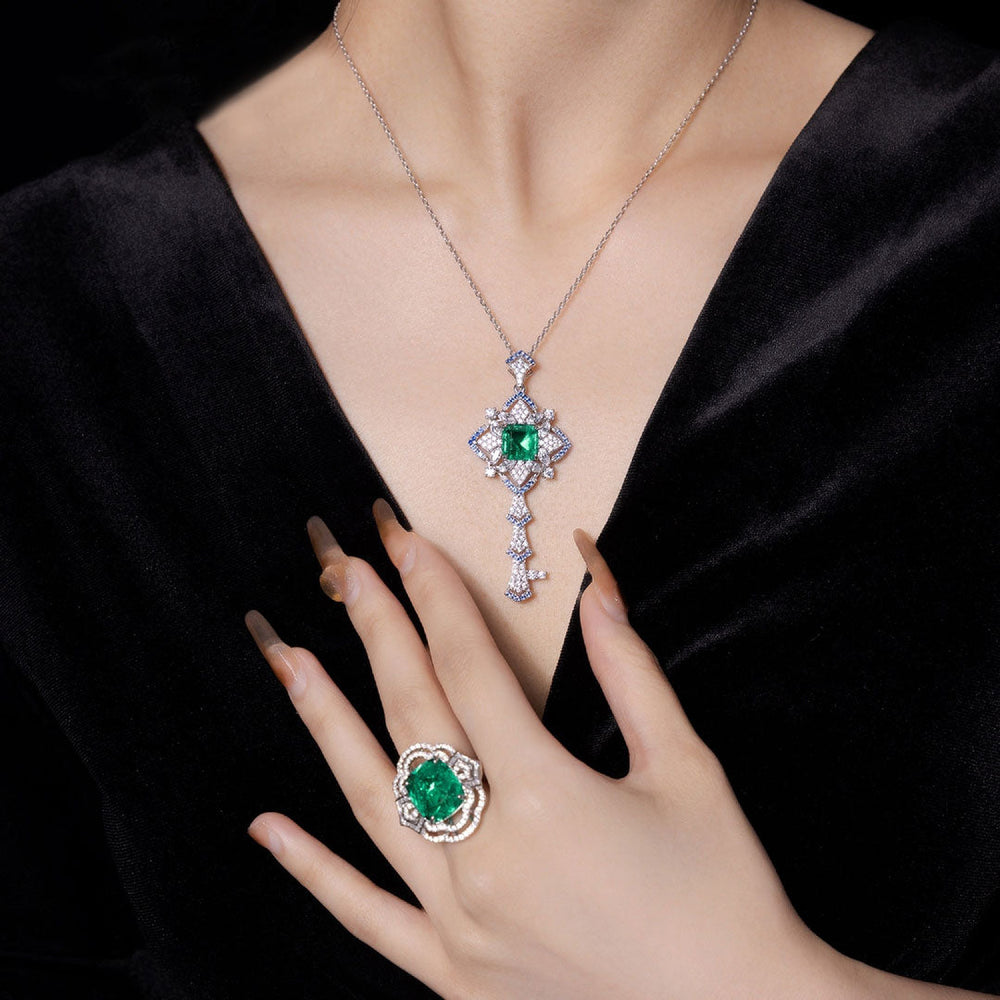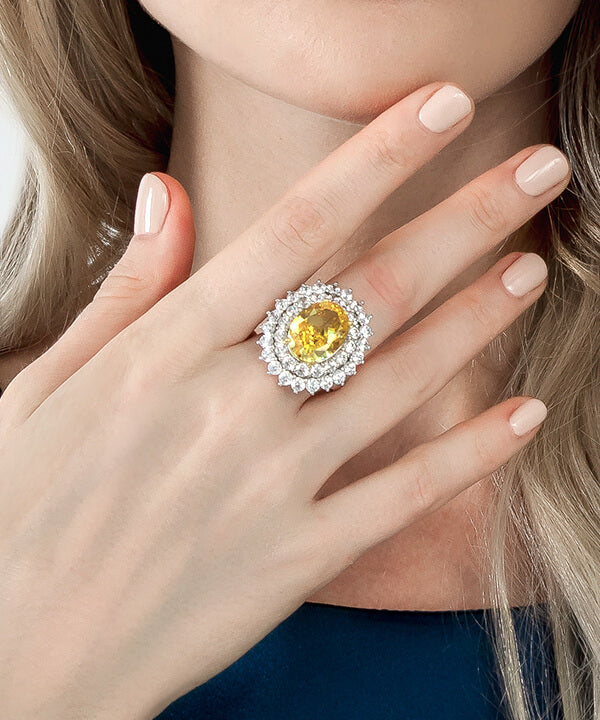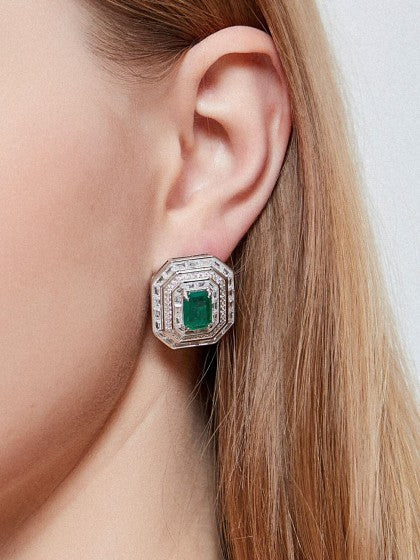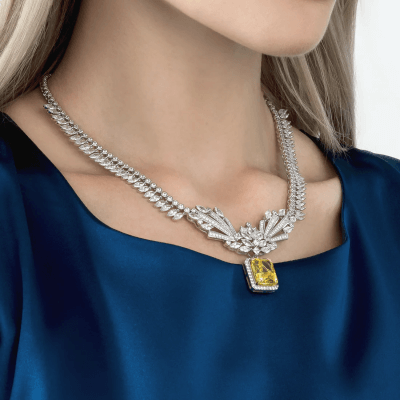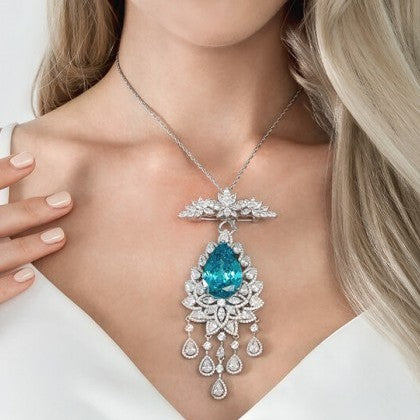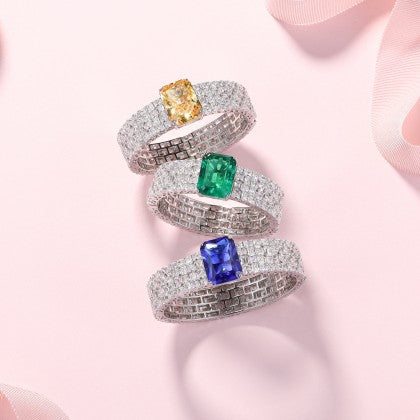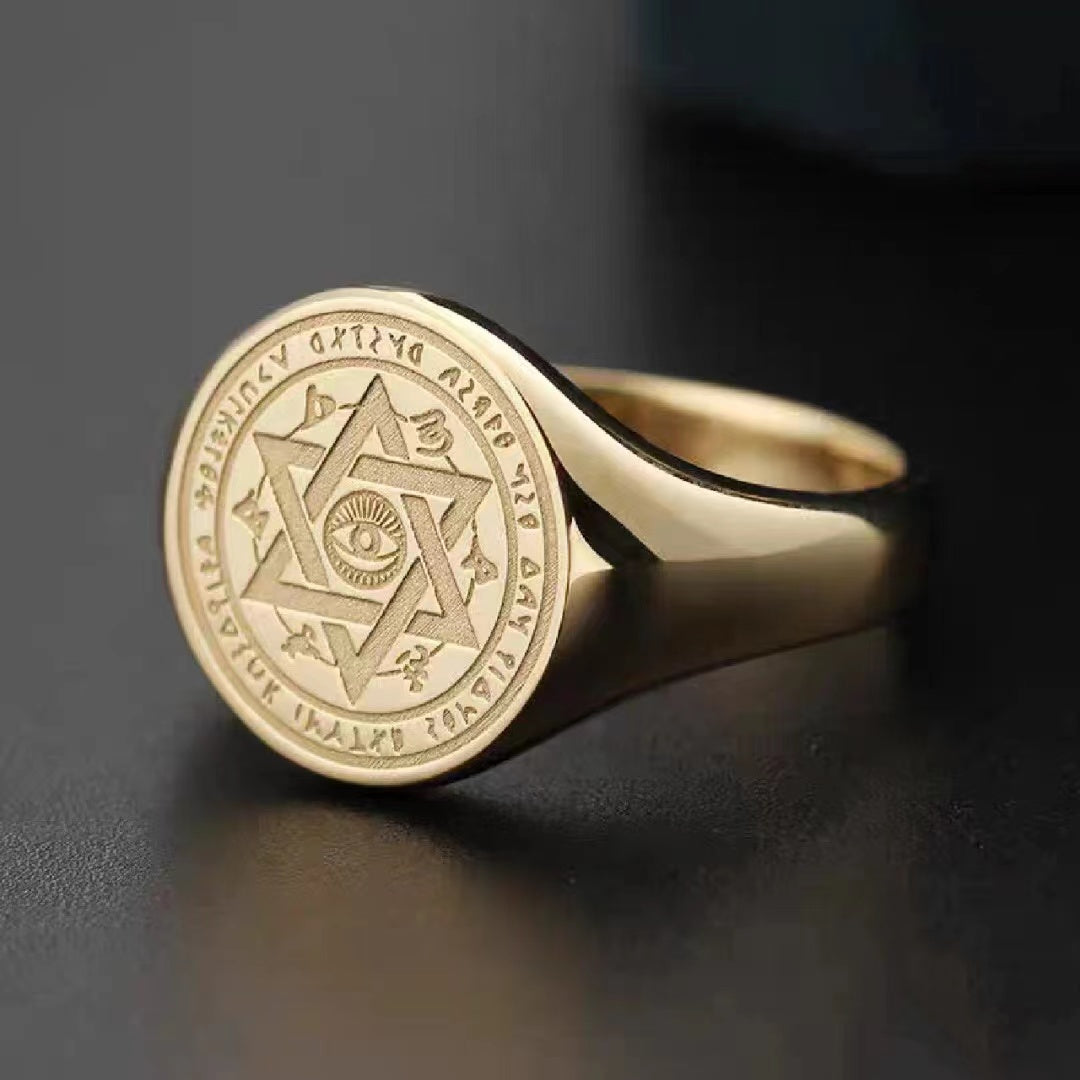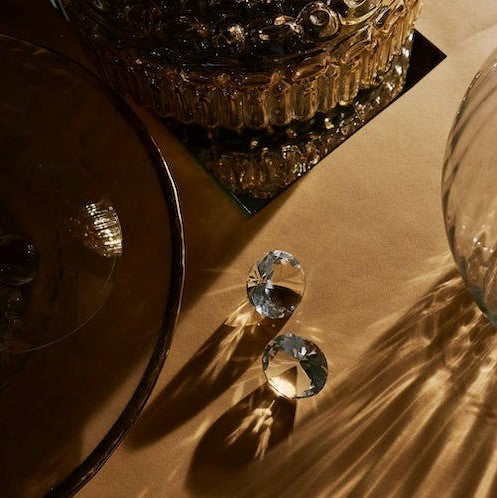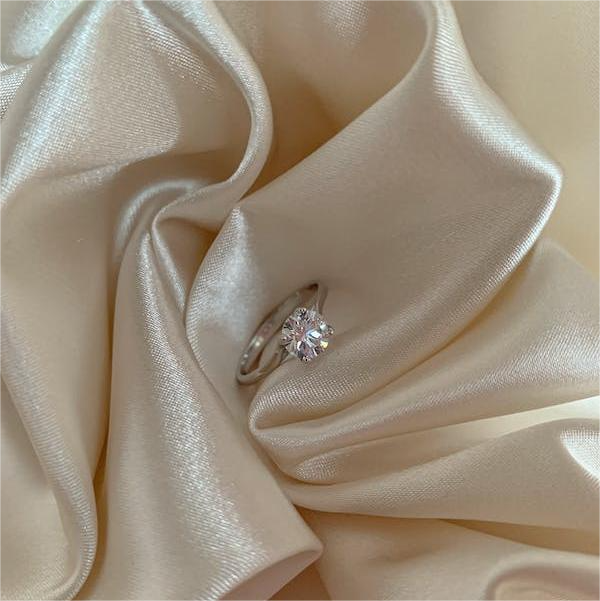In 1979 AD, archaeologists were clearing the ruins of a Roman bathhouse in the Kyle Leon region of England. The floating soil at the bottom of the bathhouse facilities was carefully swept away, and then, a small shiny red thing caught their eyes—it was a flat oval carnelian ring face, with a neatly carved one on one side. Human form, elegant figure proves its extraordinary identity - an ancient Greek god.
Then, two, three, and more ring faces emerged from under the floating earth like shining stars, blue chalcedony, amethyst, onyx, chicken liver stone... Each piece was carved with various Characters are like the chips left by the gods after the feast of Olympus.
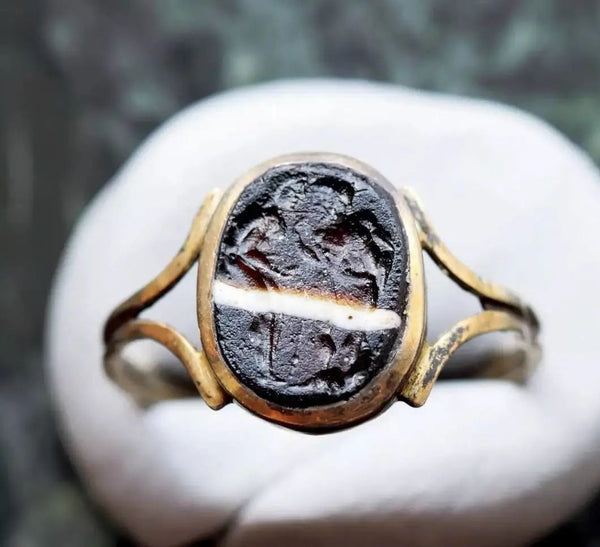
Gold imprint ring from the Roman Empire period, engraved with old people and young people on the inlaid glass imprint.
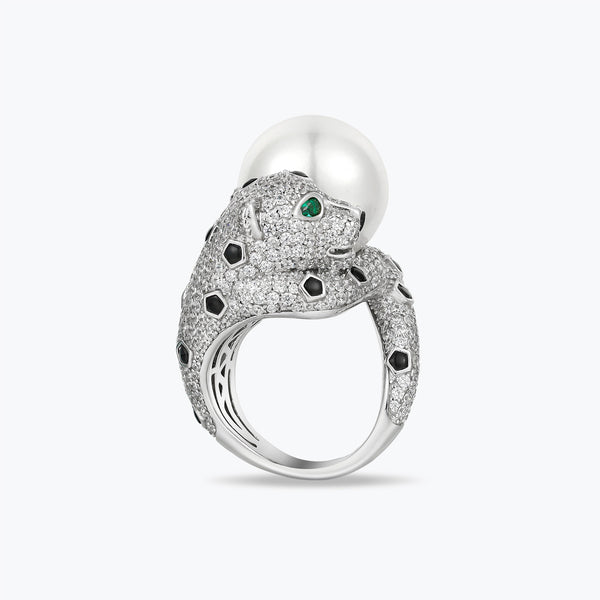
Dissoo® French Pave Cheetah Pearl Wrap Ring
Of course, it is impossible for the gods to patronize the bathing pools in the world, and there is no story about the Cowherd and the Weaver Girl in the West; these priceless sigil rings "escaped" to the water in the bathroom, leaving short-term chagrin to their careless owners, and leaving us today The next surprise; of course, the Gemmark Carvers would be happy to have such a facility as a bathhouse. However, it seems that Martil's Kalinus doesn't seem to worry about losing the ring. Maybe he is a bathhouse owner?

Ancient Egyptian Fayence "Integrated" Cast Signet Ring.
As we have seen, a few slender, gem-sigil rings meant as much to the Romans as gold, silk, white marble, or alabaster. And their long history may be beyond the imagination of the Romans.
Signet ring popular from the Mediterranean
Scattered archaeological records push the age of the Sigil ring back to the Hittite civilization 4,000 years ago. These ancient peoples from today's Turkey used to fly domineeringly in the land of West Asia, trampling the Babylonian flag under their feet.
Their arch-rivals, the Egyptians, were also early users, though in a slightly different form—for nearly a thousand years, the Egyptians had set their closest scarab amulets on ring scrolls so that when used they The imprinted underside unscrews. Sigil rings became common jewelry during Middle Dynastic Egypt, and "one-piece" cast rings were less expensive options, in addition to scarab and square sigil inlays.
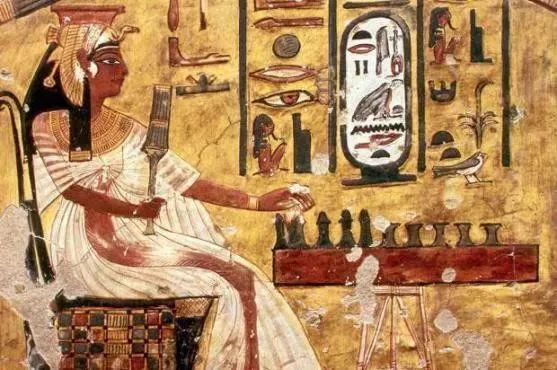
The Egyptians' sophisticated jewelry design skills contributed to the rapid popularity of the sigil ring in the Mediterranean, and it was the ancient Greeks who promoted it to the world, and their craftsmen and armies were equally efficient at this point.
The Persians who conquered Ionia soon discovered that their nobles were using gemmark rings similar to those of the Greek "barbarians", more than a hundred years before Alexander's invincible legions swept across Eurasia.
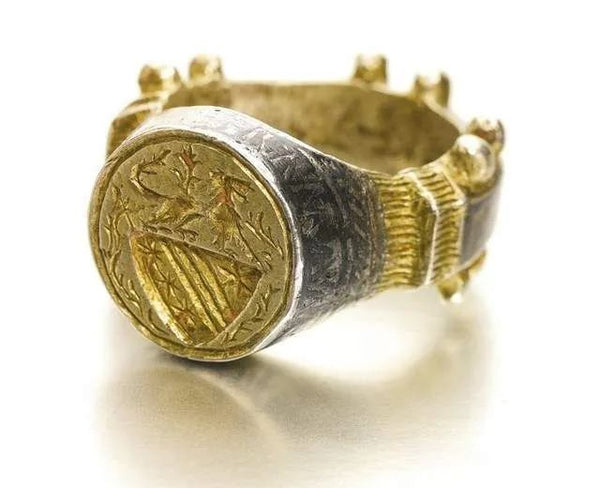
Gold signet ring 15th century
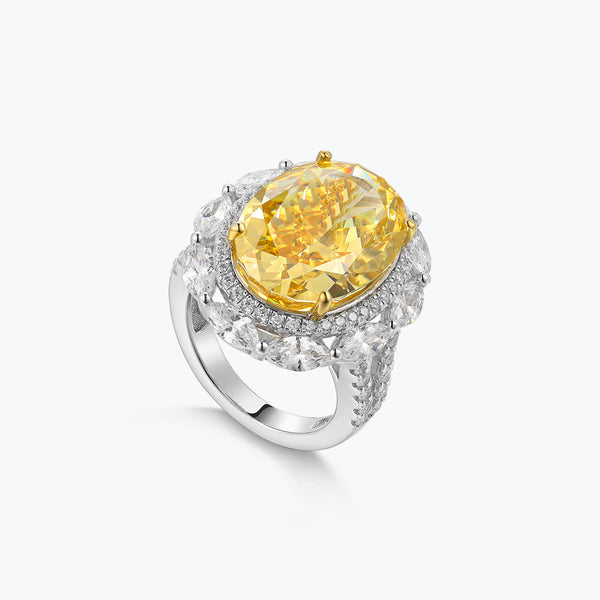
Another contribution of the Greeks to the sigil ring was the invention of the cameo (also known as cameo). This craft was favored by Roman nobility and royalty. Today, Cameo's exquisitely carved heads of emperors and queens are in the collections of major European museums.
However, the vitality of the seal ring is inseparable from its original function - the seal. This makes it have an extraordinary mission from its inception. Hittite kings, Egyptian pharaohs and Minoan high priests wore them on important occasions, imprinting important documents or clay tablets with their knuckles - a gesture of supreme elegance sure to have the admiration of their Mediterranean neighbors endlessly. Even the Old Testament says:

Scarab Signet Ring
The followers of the "New Testament" are unambiguous, so the Pope also has a "Fisherman's Ring" carved with the image of St. Peter on his knuckles. On the day when the old and new popes change, the Holy See needs to hold a solemn ceremony to "destroy" the old ring to show the change of power.

Ancient Egyptian steatite scarab device ring. Author's personal collection

Dissoo® 3ct Diamond White Emerald Cut Sterling Silver Ring
Surrender to the supernatural energy in the ring
In three thousand years, the entanglement between humans and gods or those "prehistoric powers" lingering on the seal ring, how could it be so simple! An astrologer under King Henry VIII of England was commissioned to create a ring that would win the favor of his lord, and legend has it that the archbishop at the time had such a ring that could make the King of England obey his orders. Another rumor pointed out that Cromwell, the famous man in front of the same king, possessed the legendary Ring of Solomon.
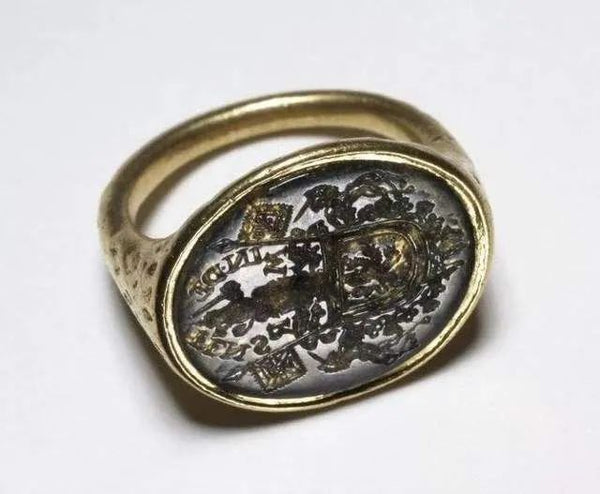
Solid Gold Chalcedony Signet Ring Engraved with Heraldry Related to Mary Made in France 1548-1558 Now in the British Museum
This inexplicable power will naturally make the serious church jealous. St. Thomas Aquinas had emphasized that the design on the sigil ring must follow certain "rules", such as not calling demons, and not using broken or meaningless words. Therefore, those imprint rings in the Middle Ages were also engraved with the apostles and martyrs holding the Holy Light, the cross, the capital IHS (the abbreviation of Jesus) and so on.
But even that didn't stop the hooligans from using St. Christopher's sigil rings as a elixir against sudden death, or biblical phrases like "but Jesus passed through them and went away" as invisibility charms. Not to mention the Gnostic sigils of the 3rd century AD that would make theologians blush - gods with rooster heads and forked serpent tails, and outlandish names like Abraksha are just too "evil" "Yes!
The gangsters never knew how to be reserved, and turned obsession into hatred in an instant. The young Roman consul Gaius Marius attempted to gain ground on his African enemy, Jugurta, but was outpaced by his political rival, Sulla.
For the purpose of showing off his victory, Sura ordered someone to make a ring, and the imprint depicted the scene of Yugurta asking him to surrender. So this ring later became the fuse of a series of chaos and civil war.
But we also have examples of the exact opposite: legend has it that after Hannibal's victory in the Second Punic War, the elders of Carthage questioned his exploits.
He didn't refute it with words, but carried a big pot among them and dumped it on the ground, so a mountain of sigil rings appeared in front of the elders—that's right! Soldiers of the Roman Legion cherish the seal ring as life, the most perfect trophy!
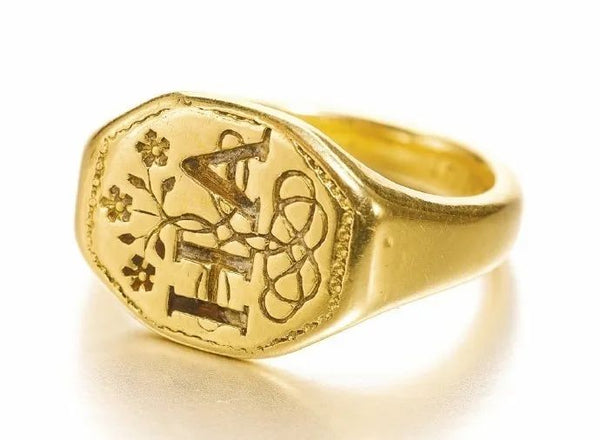
Of course, the Romans were not always prudish. Sometimes they just want to express their feelings about life, and leave emotional imprints through the hands of craftsmen: a sea beast carrying an erratic "love" suddenly took away youth; a tired Cupid leaned on an upside-down torch ——This combination is used to express mourning for the dead; those who are hurt by love can also choose Cupid and Psyche—the two children who are consummated by a kiss in myth always hold a whip on the seal of the ring and torches, staged a drama of "mutual harm"; of course, there is also Ophal, the "Queen" of Hercules full of wild beauty-does that imply that the owner of the ring is expecting a heroic adventure on horseback? ?
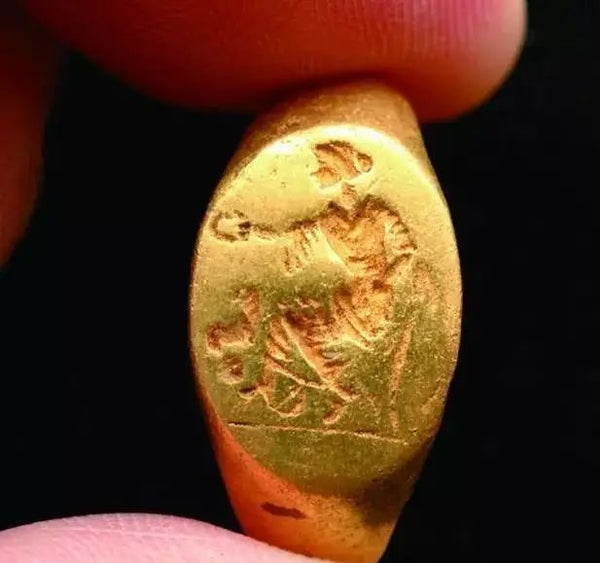
Hellenistic gold signet ring with carved goddess. Author's personal collection
A sparkling fetish
No matter how much fascination, devotion or unspeakable power once carried, collectors may start with a glimpse of beauty, or a penchant for making themselves shiny. Roman aristocrats like Carinus were earlier (if not the first) to embark on this "point of no return", although most of them were still interested in leaving no room for their fingers.
Pliny the Elder mentions Lolia Paolina, ex-wife of Emperor Caligula, who once wore gemstone jewelry (of course the signet ring) worth 40 million sesterces ), which can be described as allure - although the method of this lady's acquisition of the collection is not to be approved of.
However, the writer Seneca also said: It is a great art to accommodate everything in a small space. And Pliny the Elder himself had painstakingly tracked down the source of the gemstones used to engrave the imprint. Perhaps the love of the Romans may not be as simple as showing off their wealth, at least the craftsmen use it as a serious art to hone their skills.
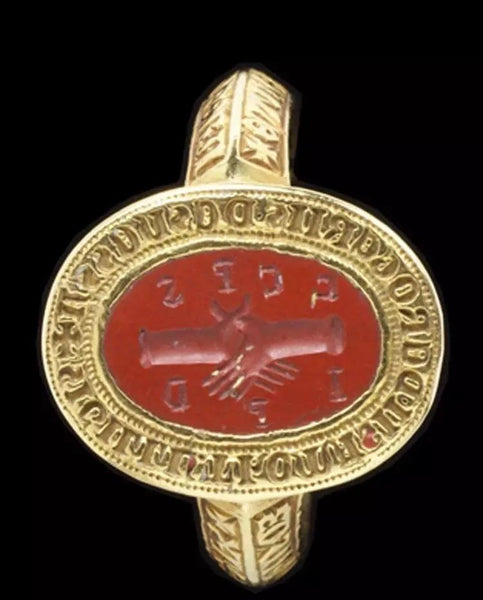
Carved jasper ring Victoria and Albert Museum, London

The chaos in the late Roman Empire and the "dark" Middle Ages did not stop the momentum of the "evolution" of the seal ring. The popularity of the use forced craftsmen to rack their brains to find more design inspirations to make up for the lack of lost gemstone engraving techniques. Making fuss about the ring setting, using special materials (such as donkey hooves) and mysterious magic symbols, or reusing ancient marks, this has become an era of endless whimsy.
Afterwards, when the bell of the Renaissance sounded, the fanaticism for the traditional seal engraving art revived again—European aristocrats who were familiar with Greek and Roman culture became the main force of this collection craze, and spending a lot of money was enough to describe their fanaticism: It is said that Empress Josephine paid 10,000 francs for a Roman work, while her husband had previously claimed to spend only 1,200 francs a year.
Even after hundreds of years, when we are finally fortunate enough to appreciate some of the exquisite collections in the three major museums around London, we should not forget the contributions of the nobles who fled during the political turmoil in the European continent.
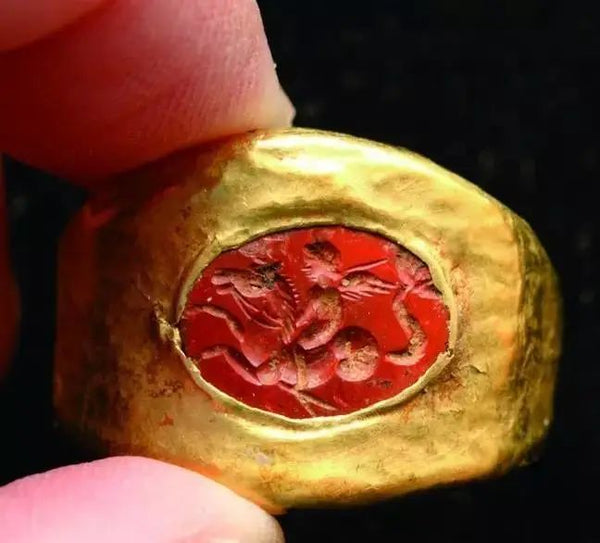
A gold signet ring from the Roman Empire period, engraved with Cupid riding a dolphin on a red chicken liver stone signet. Author's personal collection
At the same time, European craftsmen are also trying to revive the engraving techniques of gemstone marks that have been slack for thousands of years. Lorenzo Dei Medici once opened a gemstone carving school in his garden, and European craftsmen soon caught up and surpassed their Greco-Roman predecessors—only in proficiency, of course.
But this is enough to satisfy the "superior" aesthetics of European nobles. It's been a paradoxical process, with vintage fads born in the 18th century with some of the 'greatest' imitation experts in the history of sigil ring collecting. The Taci family, the name that once made many museums and private collectors ashamed and angry, now seems to have become a legend. Somewhat ironically, the use of sigil rings has declined in that era due to the popularity of seal seals.

Sigil Rings Victoria and Albert Museum
The most fruitful "toss" about the Sigil rings are those efforts to classify collections, research and make them public, which often requires the cooperation of collectors and scholars; the good academic atmosphere that began in the era of the European Industrial Revolution made all this possible. Perhaps surprisingly, Goethe the "Generalist" was one of them - I even suspect he was really good at the art of Mephisto, as the book says. With his deep knowledge of classical culture, many of his ideas about gemmarks and sigil rings are still persuasive today. Occasionally, the research will lead to some unexpected gains. For example, Arthur Evans' discovery of the "labyrinth" in Greek mythology-the Minoan palace is all derived from some special gemstones he bought in the antique market. .
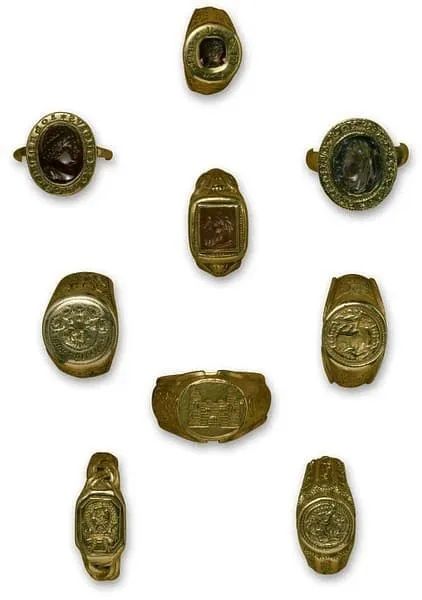
Ring from the European collection, 1380, Victoria and Albert Museum
The new generation of researchers has even abandoned the traditional "art school" discussion method, and revealed people's lives and ways of thinking by combining the beliefs, folk customs, and economy of that era. In an era when the use of sigil rings was almost abandoned, these research works have injected more realistic colors into this ancient art category. We gradually understand who wore them, on what occasions, the special identity of the wearer, his thoughts and experiences, etc.
So, when you realize that the ring on your knuckles was once owned by another living person, a conversation across time and space naturally unfolds, just like the Lord of the Rings summoning the little man who raised the red dragon— —
"Hey, Bilbo!"

Signet ring in Byzantine gold with engraved archangel. Bonhams May 2008 Antiques Auction
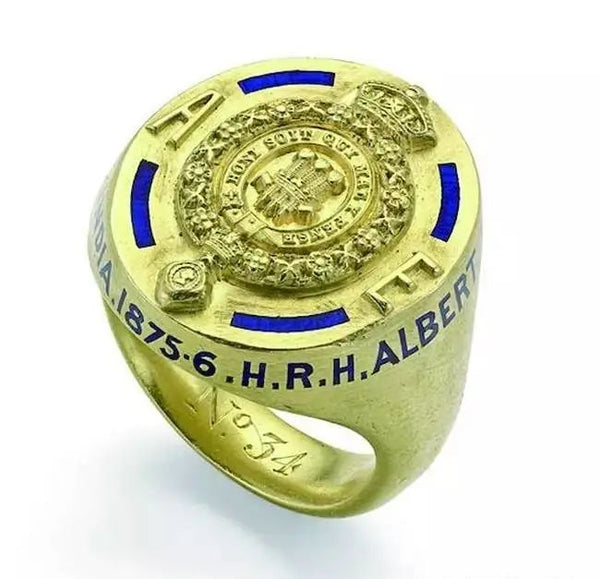
Signet ring of Albert Edward, Prince of Wales, 1875, with coat of arms and Prince's signature. Bonhams September 2013 Jewelry and Silver Auction
Go east, look for traces of the sigil ring
Enough said about the western world, let's go east. On the cliff carvings of Naksi-Rustum, we see the Zoroastrian god Ahura Mazda handing over rings representing kingship to successive Sasanian kings; and the Sasanian emperors did wear more than one ring. Habit of a Sealed Ring - Legend has it that the Arab conquerors once opened the coffin of Quslao I, and they found that the emperor's body was so lifelike that on his finger he "worn several rings, each with the engraved Aphorisms. One of them reads: 'Be generous to your friends as well as your enemies', and the other reads: 'Put the advice into action, and your goals will be achieved'...".
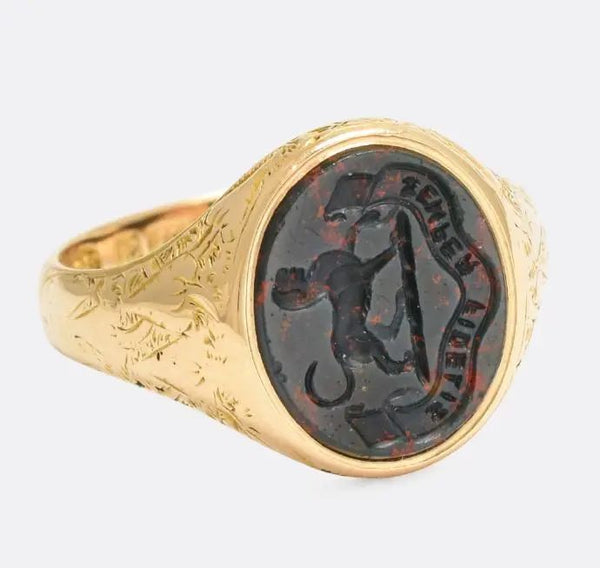
It is a pity that these legacy wealth was not handed down in the end, and their end may be the same as the "fisherman's ring" of the old popes. But the Bibliothèque nationale de France does have the old collection of a concubine who claims to be "Shapur's favorite". (Note from the author: Shapur and Kuslao are both the names of Sasanian Persian emperors).
Continuing to the east, we met Kautilya of India, the founder of the Mauryan Dynasty. The active sage, who cursed the Nanda king, escaped unscathed - thanks to a sigil ring gifted him by his princely friend. Of course, after the prevalence of Islam, wearing a signet ring will be regarded as a weird behavior in South Asia.

Sassanid cliff carvings in Nakssi-Rustum, Iran, depicting Ahura Mazda passing the ring representing kingship to Adashir.
Perhaps because of the civilized traits of advocating self-denial and introversion for thousands of years, the imprint ring has not been popular in the Central Plains, but this does not prevent the silk road merchants who have been lingering between Chang'an and Central Asia for a long time to stick to their own clothing style . Some of their chiefs were eventually able to enter and exit the palace, leaving behind prominent hereditary lines and elaborate tombs; accompanying them were the sigil rings bearing faith and honor.
Perhaps because they are familiar with the customs of the Hu people, or just out of curiosity, some high-ranking officials and relatives of the Han people also brought these shining treasures underground. In the tomb of Xu Xianxiu in the Northern Dynasties, there is a gemstone imprint ring carved with human figures, and its standard pattern is the same as the one scattered in the British Roman bathhouse and those in the Sasanian fortress. How many social secrets are buried in their stories is unknown.
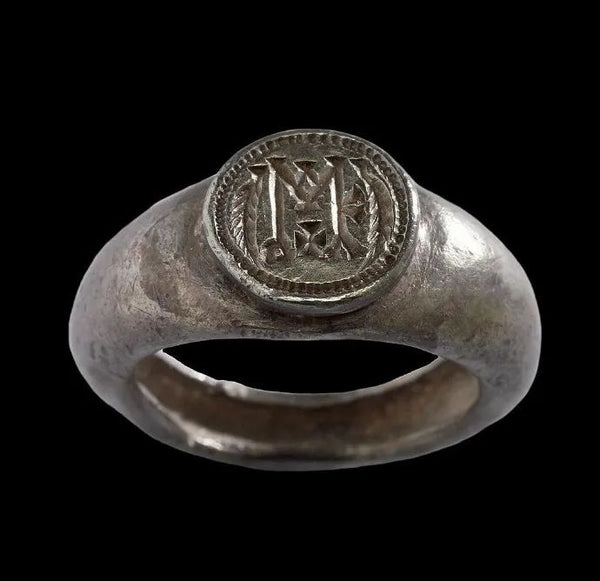
From the western world along the Silk Road to the east, many great civilizations have used Sigil rings, their names I can't list them all. But is it really only the infatuation with the shining stars that attracts people? Poets, heroes, emperors and idiots throughout the ages have poured so much emotion into this insignificant touch, perhaps precisely because it is the embodiment of the wearer himself!
In the age-old traditions of these different peoples, knowing and staying true to oneself were once admirable virtues, and all that was needed to convey them might be a small sigil ring. Get rid of the shackles of following others' opinions, defy power, stick to your beliefs, and express yourself. You want too much in this era of freedom. Why not try to wear your mark on your knuckles first.

A bronze seal ring from the Gupta period of the Kushan Dynasty in India, engraved with Sanskrit inscriptions. Author's personal collection
This article was first published in https://dissoojewelry.com/.
Want to know more about jewelry,click https://dissoojewelry.com/blogs/dissoo-blog to learn more.
